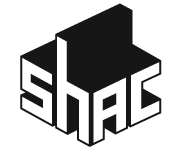SHAC is a network of designers, builders, and engineers who are working on our low-carbon and sustainable future, today.
We convene a network of people and small businesses who want to make positive change: builders, engineers, architects, designers, and product manufacturers.
We run yearly competitions – “challenges” to find good ideas and people with whom to work. [2009, 2010, 2011,2012a, 2012b, 2013, 2014, 2016]
We run community projects to learn about new and old technologies and processes.
SHAC Strategies [1]
- wiki-production
- mass customization
- open-source platforms
- crowdsourcing
- commons
- crowdfunding
- crowd wisdom
- collaborative filtering
- peer-to-peer renting.
[1] Maschmeyer, Leland, (2013) How to escape the inferno, pp12-17, Christchurch, New Zealand: FreeRange Press, http://www.projectfreerange.com/download/3707/
The SHAC network
The SHAC network includes builders, designers, engineers, architects, and small business owners who want to make a positive difference. Our values:
- Curiosity about how the world works
- We seek to do work we love and make a living of it
- Good work is more important than the mindless pursuit of profit
- We need to make a profit to invest in new ideas and stay in business
- We prefer to cooperate than compete
- We are open and honest, and share our knowledge via open source licenses and the Creative Commons
- We believe in living well with less reliance on resources-sustainability
- Our financial records are open to our community
- We try to have fun with all that we do
Join in today!
Members of the SHAC network are addressing the need for a more sustainable built environment. Join in today. Please send us a report of what you are doing and we can publish it for the benefit of others. From software and electronics, to building science, electric vehicles, and building projects.
Our built environment roughly speaking is the design of our cities and towns and roads. They are designed at present in such a way that we need to use energy and resources just to live our daily lives. We need energy to heat our houses, we need water piped in to drink and bath, food is transported from far away to our local supermarket, we need petrol to run our vehicles to travel to work and on holidays, and coal is burned on our behalf in far away factories to produce the consumer goods, the things we buy every day.
A more sustainable built environment will allow us to live happily but require less petrol, energy, and far away food and energy A more sustainable built environment does not *require* us to use less resources, but it *allows* us to do so comfortably.
In the SHAC network, we are developing prototypes of designs that we believe could help bring about a more sustainable built environment. For example tiny houses are small buildings that are an affordable way to achieve moderate residential intensification. More populated inner suburbs mean more houses that people can afford, in areas where you can walk and use public transport. Tiny houses sidestep many of the expensive costs of debt and council regulatory requirements that make houses so unaffordable today.
Lightweight electric vehicles based on bicycles are an efficient way to travel in town, and require less money and energy than travel by car.
Smart electronics and sensors help us understand how our houses work, and how to prevent mould and rot.
Solar powered and passive solar green buildings can, when inexpensively constructed, provide owners with energy and water.
Working bee type construction processes that bring together students, young people and their mentors together and may be a model for cost effective building and community building for the future.
Adopting modern information, manufacturing and design techniques to the building design process will likely lead to a reduction in design and build costs.
Using the power of the internet to harness collective intelligence via wiki’s and open source can dramatically reduce the individual effort to design what we need.
SHAC network members are investigating these and other strategies in our desire to search for solutions for a more sustainable human habitat.
At university I admired lecturers who used their understanding of science, technology, and the human condition to solve real world problems. The successful ones knew how to navigate the university bureaucracy to implement their ideas. My first job as a graduate engineer was at a electric car company in California. There I experienced a exciting mix of people working to get their first electric vehicles finished and out of the factory doors. There were so many practical issues that had to be solved to make the cars run in all conditions, from crash-worthiness certification to ensuring the batteries stayed warm enough in cold climates. The company needed to sell the cars we were making at the right price, but the company didn’t and the startup failed.
These experiences showed me that I like how researchers think carefully about the nature of the problem before acting, and how startup and open source companies can use the power of so many people working together. Companies must also deliver the right product at the right price in order to survive, a useful discipline that researchers do not face.
My aim with the SHAC network is to try to combine these two characteristics, and build a network that can make enough money to survive while working on sustainable solutions.
My own expertise is in project management, software, and electronics. Other people in the network include builders, designers, engineers, and architects.
Email tim@shac.org.nz / 021 705 346
About Tim Bishop:
[linkedinbadge behavior=”inline” URL=”nz.linkedin.com/pub/tim-bishop/6/9bb/79a/” ]]

One reply on “About SHAC”
[…] competition is open to all, and entries close on 2 November 2015. Check out the SHAC blog for more […]